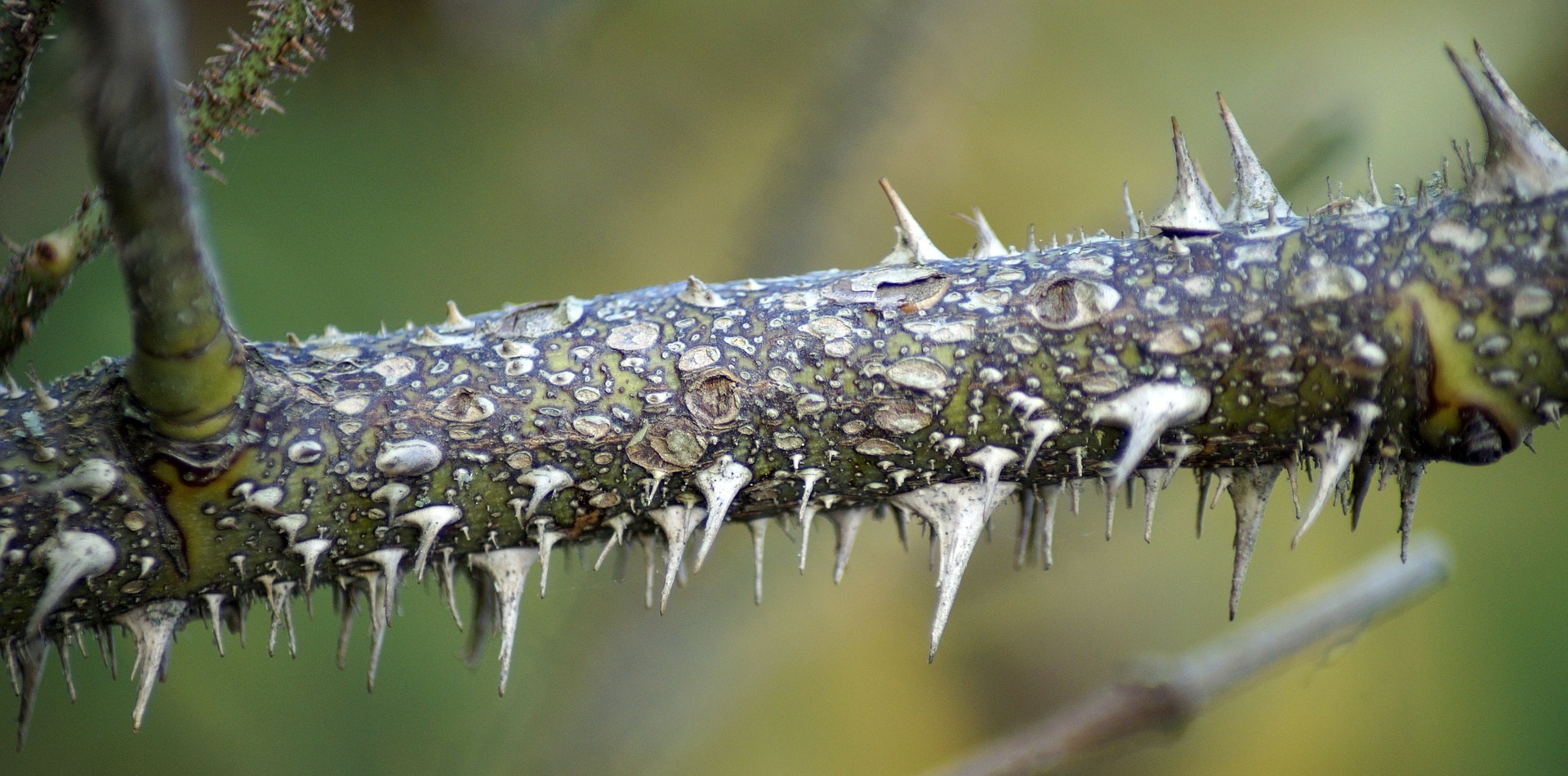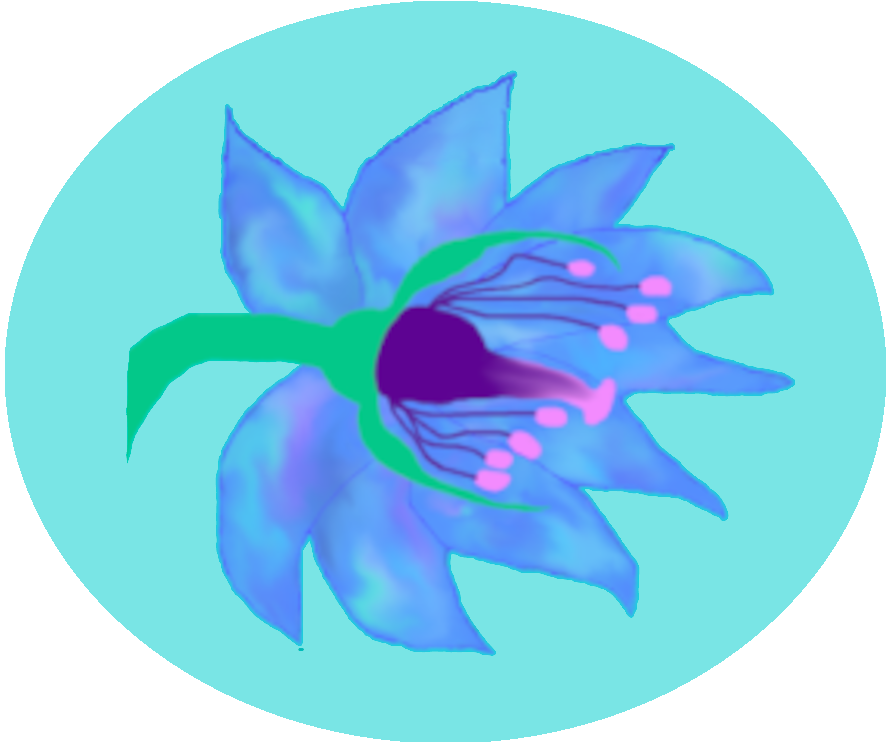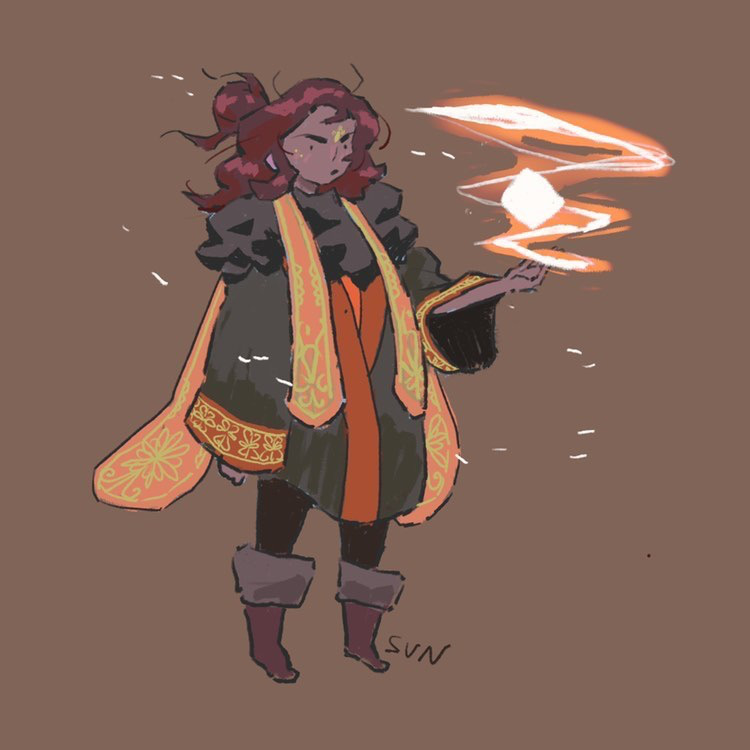Numbthorn
At the Latimer family house, Isabell Patience Latimer escorted a group of guests into the garden. There they saw several trees and fences climbed by thorny plants with large flowers. One of the guests gasped as he recognised the plants. "You are growing in your garden, miss Latimer? I thought those did poorly outside greenhouses, what is your secret?" Isabell knew exactly how to answer, since this was a question she received a lot. She responded with a measured friendly smile, playing up her part of the perfect host. "Fertilizer. I order a special mixture that suits them well. I also grind up fern leaves for them, and plant thin-weeds alongside them. They won't bloom during the Cold season, but still bloom four times a year." Sounds of admiration came from her guests, young merchants and the like, who had enough knowledge to understand the difficulty. She showed them the flowers and some woven hedges, as she continued. "The venom varies in strength, it's best to clip them during the Cold Harvest season. And of course the smell is lovely, while the hip jelly is just delicious. I do have to stop my Short Furs from eating the hips before my harvest." The guests chuckled as they looked at the giant plated rats that were enthousiastically following them around, imagining the sight of a grumpy Isabell berating her naughty pets. When they sat down and got to eat some jelly as part of their lunch, they simply couldn't resist and snuck some to the rats, which consumed the snacks with great vigour.
A Thorn So Sweet
The is an evergreen climbing plant native to the rainforest area of the southern area of Grayburn. A sturdy climber which defends itself with venomous thorns that numb its victims, people have long since used it to construct natural defenses and ladders. In the current age, its petals and venom are harvested for the production of scents and anaesthetics. While the Latimers never had the play a central part in their commerce, as they found it too unreliable for usage in ship building, they did make good use of it in defensive construction. Thorn-weaving, as the art of guiding branches to create barriers is called, is still an art considered extremely valuable to keep animals away from storehouses.Basic Information
Growth Rate & Stages
Additional Information
Uses, Products & Exploitation
Geographic Origin and Distribution
Symbiotic and Parasitic organisms
Characteristics
Ninety paces with branch-support
Jelly Recipe
Ingredients & Materials
- Two large soup pans
- One straining cloth
- One foam spoon
- Storage jars
- 1/2 a pan of ripe flower hips
- 1/4 a pan of water
- 1/16 a pan of sour liquid
- 1/8 a pan of cane sugar
Ladders
To construct a ladder, first one needs to span two ropes against trees, and place fresh branches against each rope. Often people span up to five ropes, in case some of them fail. Then, wait three for the branches to finish growing up the ropes. Alternatively, spiral a rope around an existing branch with the occasional knot to keep it in place. This is riskier due to all the thorns, but doesn't require waiting. Next, use thick gloves to protect against the thorns. Use cut thick treebranches as steps. For each step, use knots to tie it to both the original ropes, and the connected branches. The steps are now harmless, but animals will end up touching the thorns when climbing. Depending on rope material and quality, a rope ladder can last anywhere from one to fourty years. Wet ropes can carry less weight, and break down faster over time.
Venom
A single sting from a thorn will spread numbness over an area the width of an arm. This numbness costs approximately a third of the sensitivity of the affected area, and weakens muscles as well. It will generally take over two hundred counts before the numbness starts to decrease. Getting stabbed repeatedly, or breaking off a thorn from its plant while it continues spreading its venom, will stack in area size, numbness effectivity, and duration. Being stun by four thorns in the same limb is enough to lose all feel in the limb, taking on average seven hundred counts before any form of sensitivity returns. With anaesthetics, one ml of venom is enough to fully numb the area for nine hundred counts. A dose of eight ml or more will impact the entire patient and may very well cause them to fall unconscious for up to a quarter day.
Remove these ads. Join the Worldbuilders Guild









I like how you've incorporated practical uses for the venom - local anesthetics -- in what would otherwise by sort of a nuisance plant. Because that's how people work. Well done!
I came up with the venomous thorns, decided on its exact effect, then indeed went 'wait a second, you can use this as an anaesthetic!' And so it was written.
Too low they build who build beneath the stars - Edward Young